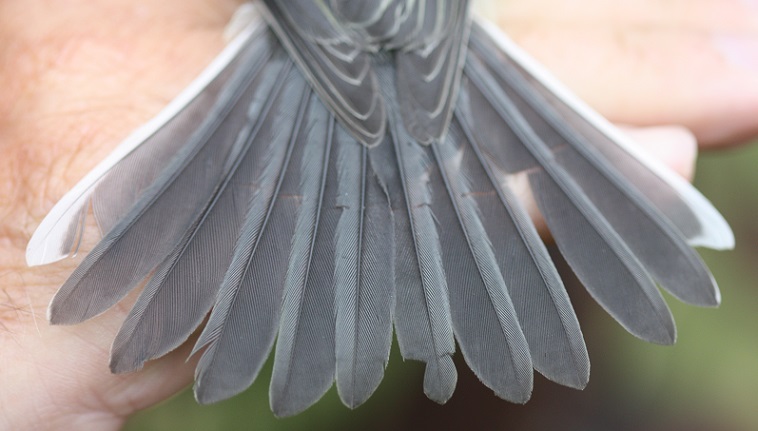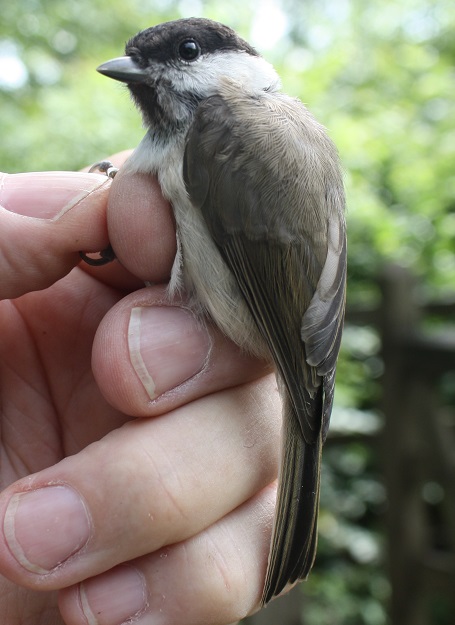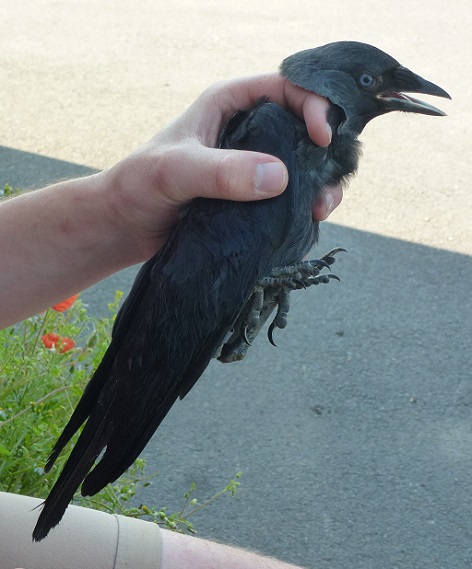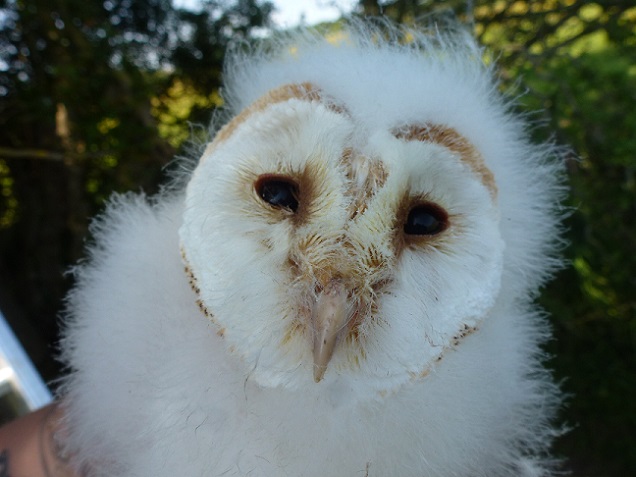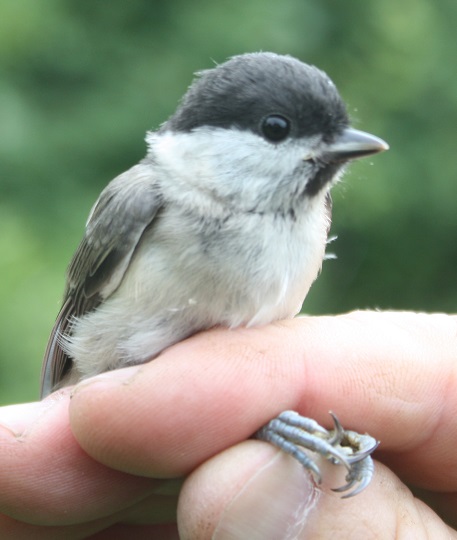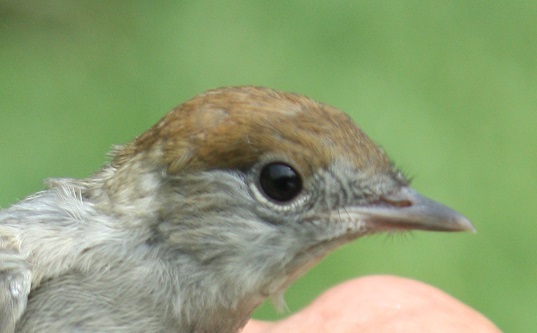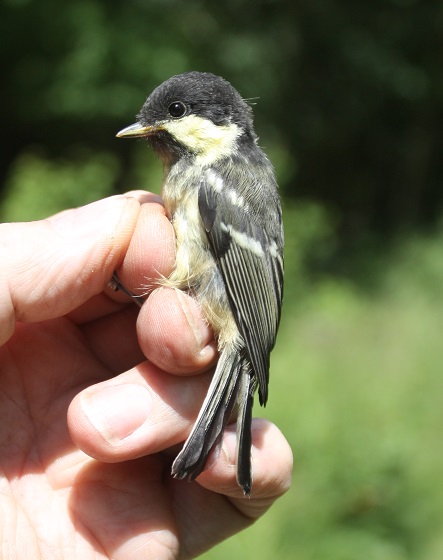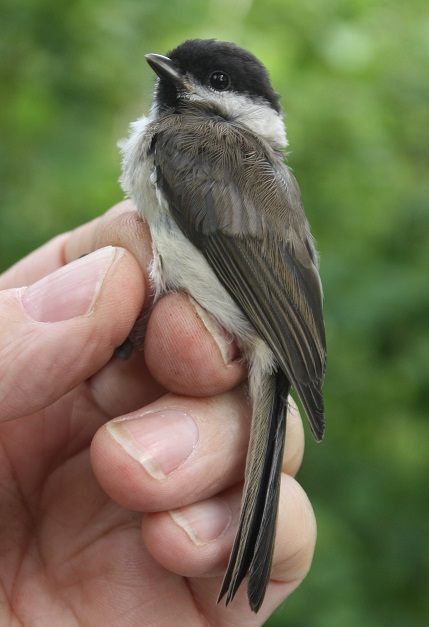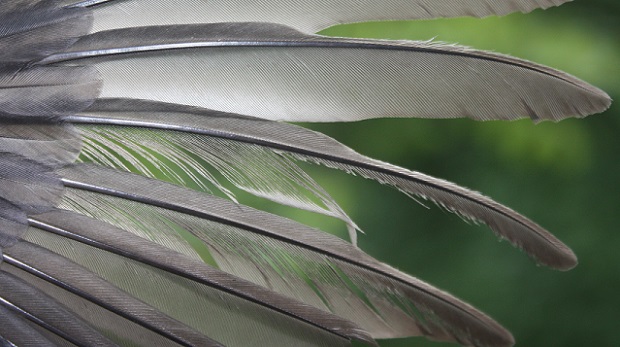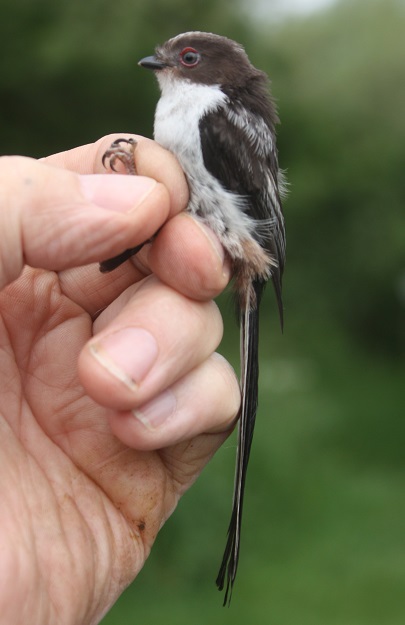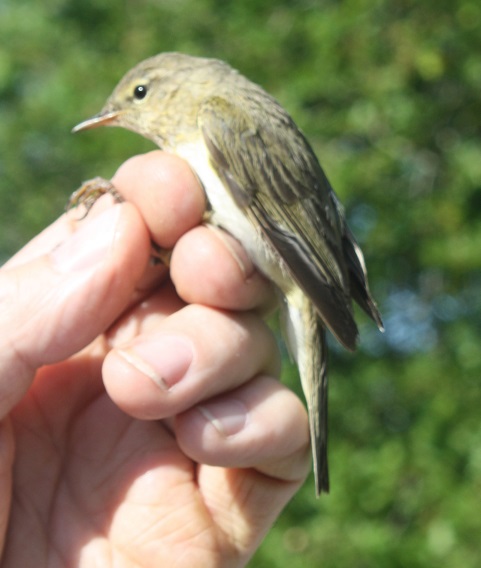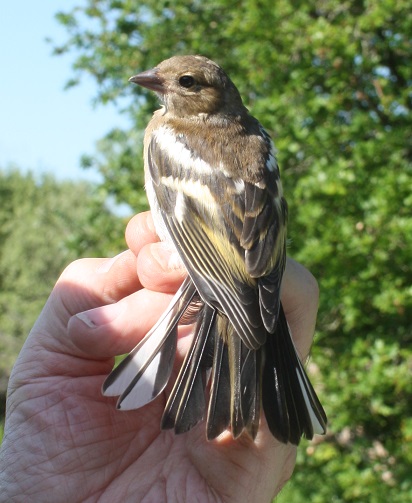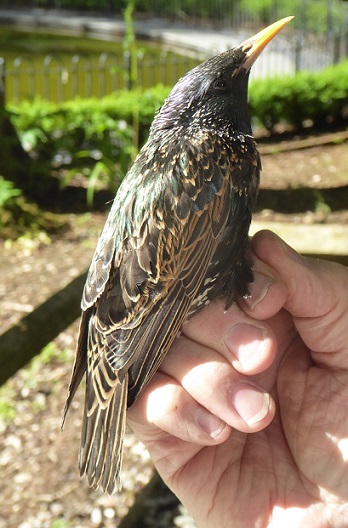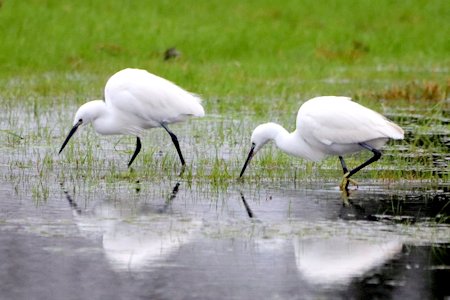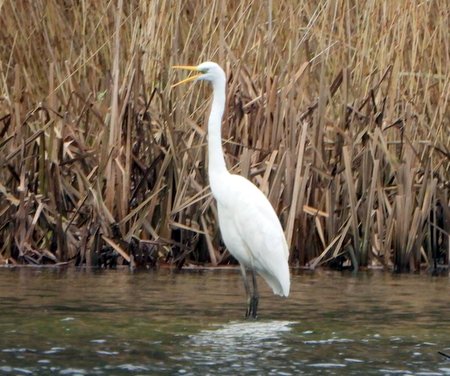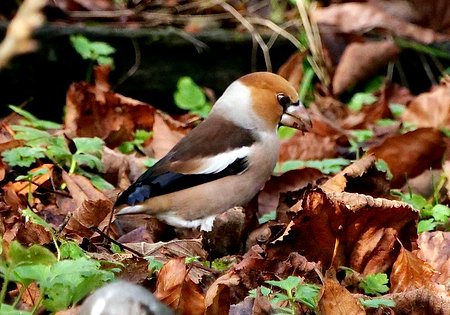Saturday, Jonny and I carried out a session at Ravensroost. We had the nets all set and open by 6:00: just in time for the rain to threaten. After an hour of very light drizzle the sky cleared and the weather conditions were pretty well perfect for ringing: dull light, low wind and dry. The wind got up a bit at about 10:30 and we packed up at the planned finish time of 11:00. As we were only two-handed, I decided not to cover the entire project area and did my survey of the uncoppiced area to the north of the bridle path on Monday. This just entailed setting four nets to the north of the bridle path. I also tried one additional area, to see whether it might prove fruitful in the future. The omens are not good.
The list from Saturday was: Nuthatch 2; Treecreeper 1; Blue Tit (1); Great Tit 2(1); Marsh Tit 1; Long-tailed Tit (1); Wren 5; Dunnock 3(1); Robin 6(2); Song Thrush 2; Blackbird 1(4); Blackcap 10(2); Garden Warbler 3(1); Chiffchaff 4(5). Totals: 40 ringed from 12 species; 18 retrapped from nine species, making 58 processed from 14 species. I have to say that it is highly unusual for Ravensroost Woods to produce a greater variety of species than Lower Moor Farm, as it did this week, compared to Wednesday's session (see previous blog article). Unusually, only one of the Chiffchaffs caught was a juvenile. We did have juveniles of Nuthatch (2); Treecreeper (1); Blackcap (7); Garden Warbler (2); Dunnock (3); Wren (3); Robin (6) and Song Thrush (2). Comparing it to last year, the catch is slightly higher, even without the control nets, at 58 compared to 53, also from 14 species. The number of young birds was, again, higher: with 27 from eight species, compared to 20 from four species: with the majority being Robins. There were no Blackcap or Garden Warbler youngsters at this time last year (even our solitary juvenile Chiffchaff is better than we got last year).
The list on Monday was: Nuthatch 2; Treecreeper 1; Marsh Tit 1; Wren 2; Dunnock 1; Robin 1(1); Blackbird 1; Blackcap 6; Chiffchaff 2(1). Totals: 17 ringed from nine species; two retrapped from two species, making 19 birds processed from nine species. Ten of these birds were juveniles, One each of Blackcap, Dunnock, Nuthatch and Robin, the three Chiffchaffs and two Wrens were adults. The Marsh Tit was our second juvenile of the year in Ravensroost and has been colour ringed with orange over yellow on its right leg..
As well as the Marsh Tits, always a highlight, the other highlight to me was the three juvenile Nuthatches. They were a long way through their post-fledging moult already but their colours were dull and their primary feathers still had a very obvious juvenile hue. Monday's adult male, by contrast, had very tatty and worn edges to its primary feathers but the overall colour saturation on the head and body was much richer.
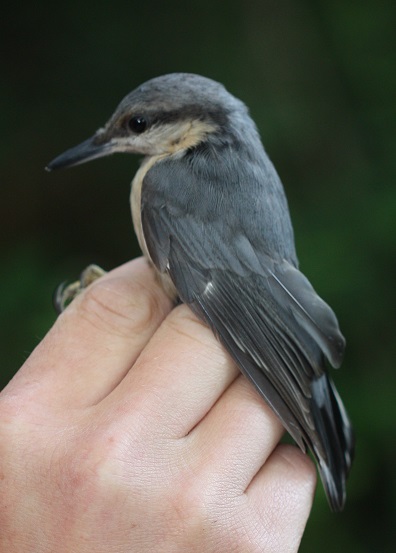
The new Marsh Tit was a welcome addition: the third adult for Ravensroost already this year. In addition, we have retrapped 14 individual birds from previous years on site already in 2017, including one which is at least six years old now. We are also having a good year for Garden Warblers: it is well known that there is a canopy height dichotomy between Blackcaps and Garden Warblers. Garden Warblers preferring a lower canopy height than Blackcaps. Blackcaps also show territorial aggression towards Garden Warblers, driving them out of areas which might still be suitable. When luring for Blackcaps outside of the breeding season you can catch two birds with one lure by playing Garden Warbler song and calls. The focus of the Garden Warbler distribution is the area either side of rides R28 and R38. The coppicing of those areas has clearly benefitted them over the last two years. Over all of the years that I have been ringing in Ravensroost (since 2009), all bar one of them has been caught along that line, with the majority being along R38. None have been found in the uncoppiced areas north of the bridle path, with its significantly higher canopy, whereas we have caught numerous Blackcaps there.
We did have one amusing interlude, when we were approached by quite a chatty photographer on a (reasonably fruitless) search for butterflies to photograph. He told us, in a slightly jocular way, that photographers are not happy at the activities of ringers. Having had first hand experience of the hostility from some photographers, not all, I must stress, it was quite the nicest chat we have had about it. "Could we please leave a few Bullfinches without rings at Lower Moor Farm so they can photograph them?" was the request. As we had spent the entire morning listening to Bullfinches contact calling all around us and failing to catch even one, we suggested he invest in Adobe Photoshop so he could remove the evidence. Nobody has yet explained to me what the issue is over ringed birds in photographs: they cannot all be selling them to agencies, Also, nobody has explained why photographers think their hobby trumps our hobby. Theirs provides personal gratification, as does ours, but ours also provides important data for the scientific analysis of what is happening to our bird life and mine, at least, is used by the Wildlife Trust and the Forestry Commission to better manage their sites for bird life. Interestingly, our chatty photographer told us he was previously a ringer and had once ringed a Montagu's Harrier (the first for Wiltshire, he said) on Salisbury Plain and a Peregrine Falcon. We had quite liked him up until that point.
On Monday the weather was much more conducive to butterfly activity and the area of the main track north of the bridle way, on the stretch where it bears ninety degrees to the east before bending back 90 degrees to continue north, was alive with butterflies from 9:00 onwardstme. There were at least a dozen each of Silver Washed Fritillary and White Admiral plus hundreds of Meadow Brown, a few Speckled Wood, two Large Skipper and a solitary Comma. In amongst all that activity, there was a single Banded Demoiselle damselfly. Absolutely stunning. On leaving the site, I was also lucky enough to see two Brown Hairstreak flying around the car park area. ST/JC

